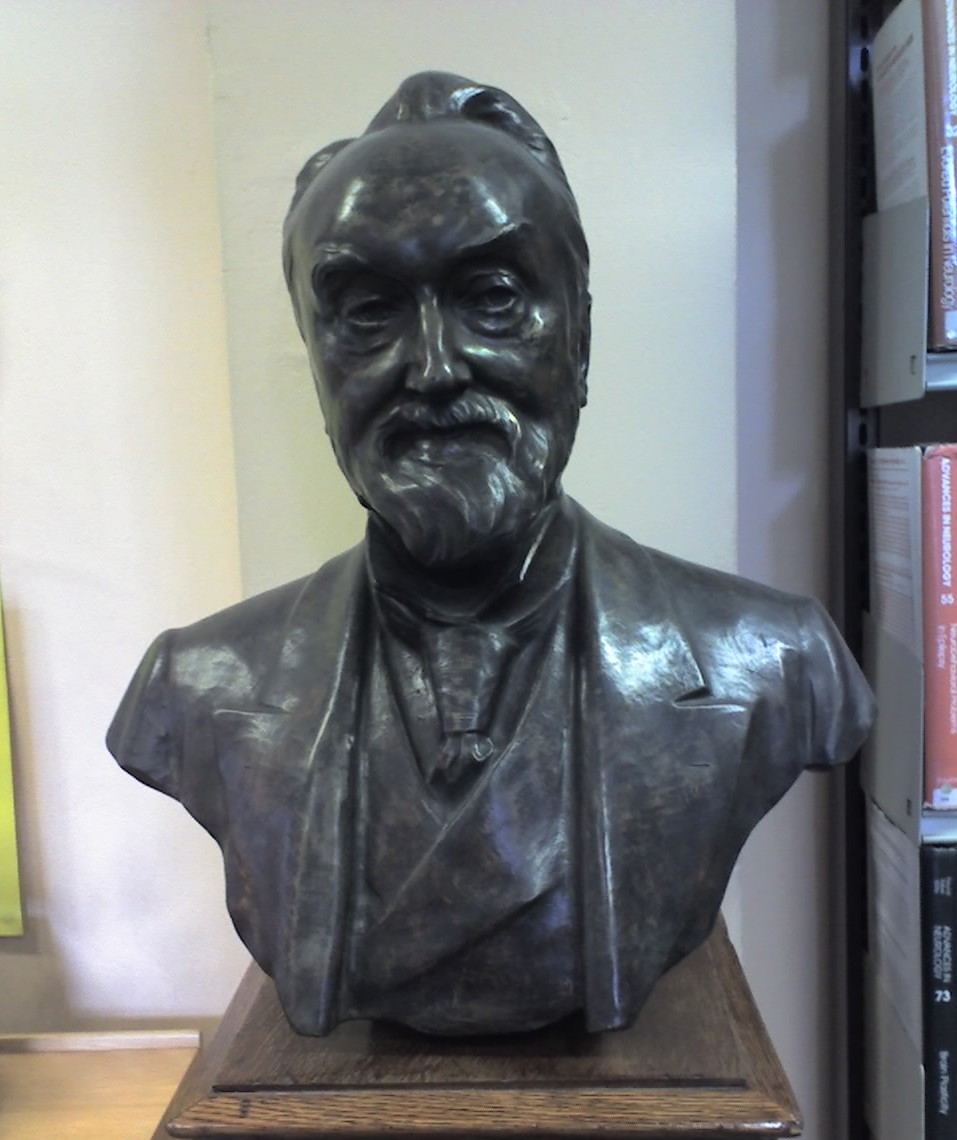- John Hughlings Jackson
Infobox Scientist
name = John Hughlings Jackson
box_width =
image_width =260px
caption = Bust of John Hughlings Jackson, resident in theInstitute of Neurology , London
birth_date =March 4 ,1835
birth_place =Providence Green ,Green Hammerton ,Yorkshire
death_date =October 7 ,1911
death_place =London
residence =
citizenship =
nationality = English
ethnicity =
field =neurology
work_institutions =
alma_mater =
doctoral_advisor =
doctoral_students =
known_for =
author_abbrev_bot =
author_abbrev_zoo =
influences =
influenced =
prizes =
religion =
footnotes =John Hughlings Jackson, FRS (
March 4 ,1835 -October 7 ,1911 ), was an Englishneurologist ; born atProvidence Green ,Green Hammerton , nearHarrogate ,Yorkshire .Biography
He was the son of Samuel Jackson, a
yeoman who owned and farmed his land, and the former Sarah Hughlings, the daughter of a Welsh revenue collector. His mother died just over a year after giving birth to him. He had three brothers and a sister; his brothers emigrated toNew Zealand and his sister married a physician.He was physician to the
London Hospital and later to the then National Hospital for Paralysis and Epilepsy located inQueen Square, London (now theNational Hospital for Neurology and Neurosurgery ). He was elected aFellow of the Royal Society in 1878. Jackson died inLondon onOctober 7 ,1911 .Science and research
Jackson was an innovative thinker and a prolific and lucid, if sometimes repetitious, writer. Though his range of interests was wide, he is best remembered for his seminal contributions to the diagnosis and understanding of
epilepsy in all its forms and complexities. His name is attached eponymously to the characteristic "march" of symptoms in focal motorseizure s and to the so-called "dreamy state" ofpsychomotor seizure s oftemporal lobe origin. His papers on the latter variety of epilepsy have seldom been bettered in their descriptive clinical detail or in their analysis of the relationship of psychomotor epilepsy to various patterns of pathological automatism and other mental and behavioural disorders.Methodology
Jackson had no possibility of recourse to modern sophisticated neuro-investigative technology, but had to rely upon his own powers of clinical observation and deductive logic. Some of his eminent successors in the field of British neurology have been critical of many of his theories and concepts; but as Sir
Francis Walshe remarked of his work in 1943, " ... when all that is obsolete or irrelevant is discarded there remains a rich treasure of physiological insight we cannot afford to ignore."In
Otfrid Foerster 's research on the motor cortex, he cites exclusively Hughlings Jackson for the initial discovery (although without evidence) of the brain as the spring of neurological motor signaling [ [http://brain.oxfordjournals.org/cgi/reprint/59/2/135?ijkey=a357c93b1af6ac4d2422e6ec3624183cb53f6176&keytype2=tf_ipsecsha Foerster, O.] , "The motor cortex in man in light of Hughlings Jackson's doctrine." Brain, June 1963, part 2, vol. 59, 135-159.] .Contributions
Together with his friends
David Ferrier andJames Crichton-Browne , two eminent neurologists of his time, Jackson was one of the founders of the important Brain journal, which was dedicated to the interaction between experimental and clinical neurology (still being published today). Its inaugural issue came to light in 1878.In 1892, Jackson was one of the founding members of the "National Society for the Employment of Epileptics" (now the
National Society for Epilepsy ), along with Sir William Gowers andDavid Ferrier .Oliver Sacks has repeatedly cited Jackson as an inspiration in his neurologic work.References
External links
* [http://www.whonamedit.com/doctor.cfm/2766.html Biography]
* [http://www3.oup.co.uk/jnls/list/brainj/index/ 100 Years of Brain Journal]
* [http://www.findagrave.com/cgi-bin/fg.cgi?page=gr&GRid=6592 John Jackson on Find-A-Grave]
* [http://www.britannica.com/eb/art-12012 Photo] from Encyclopedia Britannica.
Wikimedia Foundation. 2010.
